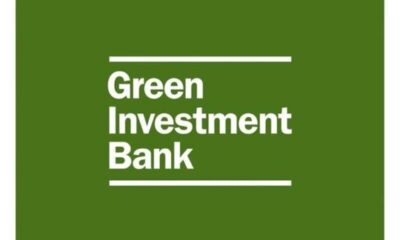

Economy
Greater standardisation would help green bond market to flourish in real estate
Investor demand for green bonds in real estate is growing globally; however, issuance by commercial real estate companies is limited. Senior Director at S&P Global Ratings, Eric Tanguy, explains why a more streamlined and standardised method of evaluating green bonds is necessary.
Green bonds – debt issued to fund environmentally sustainable projects – are increasingly aligning the interests of commercial real estate tenants, commercial real estate companies (CREs) and investors. Via green bonds, tenants can meet their aims to rent more environmentally friendly, energy efficient properties, CREs – often Real Estate Investment Trusts (REITS) – can acquire new funds to develop environmentally sustainable assets and investors can acquire sustainable debt instruments.
Despite this, green bond issuance in real estate has been limited. In this respect, the lack of formal standardisation in the green bond market, including clear guidelines as well as green bond transparency and governance reporting, remains a barrier to growth.
Aligning common interests
A growing number of companies are incorporating their environmental impact, or ‘sustainability data’, in their annual reporting. With this in mind, it’s not surprising that a recent survey of 120 European global corporations finds that sustainability and environmental risk concerns rank equally with geopolitical issues, and higher than currency fluctuations, emerging market competition and energy prices (CBRE European Occupier Survey 2015/2016).
The United Nations Environment Program reports that buildings alone use about 40% of global energy, and emit approximately one-third of greenhouse gas emissions. Commercial real estate tenants, mostly large international corporations, are therefore increasing their efforts to rent energy efficient, sustainable buildings to reduce their expenses, while also highlighting their greater awareness of climate change issues.
This in turn helps CREs with environmentally sustainable assets to collect competitive rents and reduce building vacancies – especially in oversupplied markets, like in Paris or Milan, where sustainability certification can affirm market leadership.
Not only does “green” real estate strengthen CREs’ competitive positions, “green” financing also allows CREs to tap into significant investor demand, looking for green financing instruments to diversify their portfolios.
This trend is occurring because investors increasingly see green bond issuers better attuned to climate change risk, and green bond-backed projects as better able to adapt and contribute to the future economy. Emerging corporate green bonds can also deliver higher yields than bank and supranational issued green bonds, which currently account for the majority of the green bond market.
So what is holding green bonds back in real estate?
Despite the growing awareness to the benefits of green bond issuance in real estate, a higher level of standardisation, including a standardised method of monitoring the governance and transparency of green bond proceeds, is required to reach a higher level of issuance and a larger pool of investors. Increasing standardisation may include developing the transparency, governance, and environmental impact of green bond proceeds.
Currently, the green bond market lacks a uniform sector-specific framework that unifies green bond criteria and commitments for the use of proceeds. In other words, investors need to spend extra time to evaluate how “green” investments in certain real estate projects actually are, as well as ensure that proceeds for green projects are governed appropriately.
Moreover, reporting the “greenness” of bonds involves additional fees and costs associated with external reporting, secondary opinions and various third-party certifications. For this reason, green bond issuance is constrained to large highly-liquid issuers that can afford these expenses. A more defined sector-specific framework would likely limit many unnecessary costs faced by issuers, thus opening the door to a wider pool of entrants.
Addressing standardisation
Achieving standardisation in the green bond market will take time and effort. Currently, green bond certification is evaluated through either BREEAM (Building Research Establishment Environmental Assessment Method), HQE (Haute Qualité Environmentale i.e. high environmental quality standard), or LEED (Leadership in Energy & Environmental) assessments, which measure various indicators of “green” such as carbon emissions, water efficiency, and building materials.
These certifications are important to providing some level of standardisation for assessing “greenness”; in the medium run, the success of green bonds will be judged on its appeal as a funding alternative in real estate, with mounting issuance momentum helping to tackle the lack of market standardisation.
This may take the form of a unified, more comprehensive assessment method measuring the environmental impact, governance and transparency of different types of green bond proceeds. For this reason, S&P Global is in the process of developing a green bond prototype, the “Green Bond Evaluation”, which will be released towards the end of this year.


 Environment10 months ago
Environment10 months agoAre Polymer Banknotes: an Eco-Friendly Trend or a Groundswell?

 Environment12 months ago
Environment12 months agoEco-Friendly Home Improvements: Top 7 Upgrades for 2025

 Features9 months ago
Features9 months agoEco-Friendly Cryptocurrencies: Sustainable Investment Choices

 Features10 months ago
Features10 months agoEco-Friendly Crypto Traders Must Find the Right Exchange





























